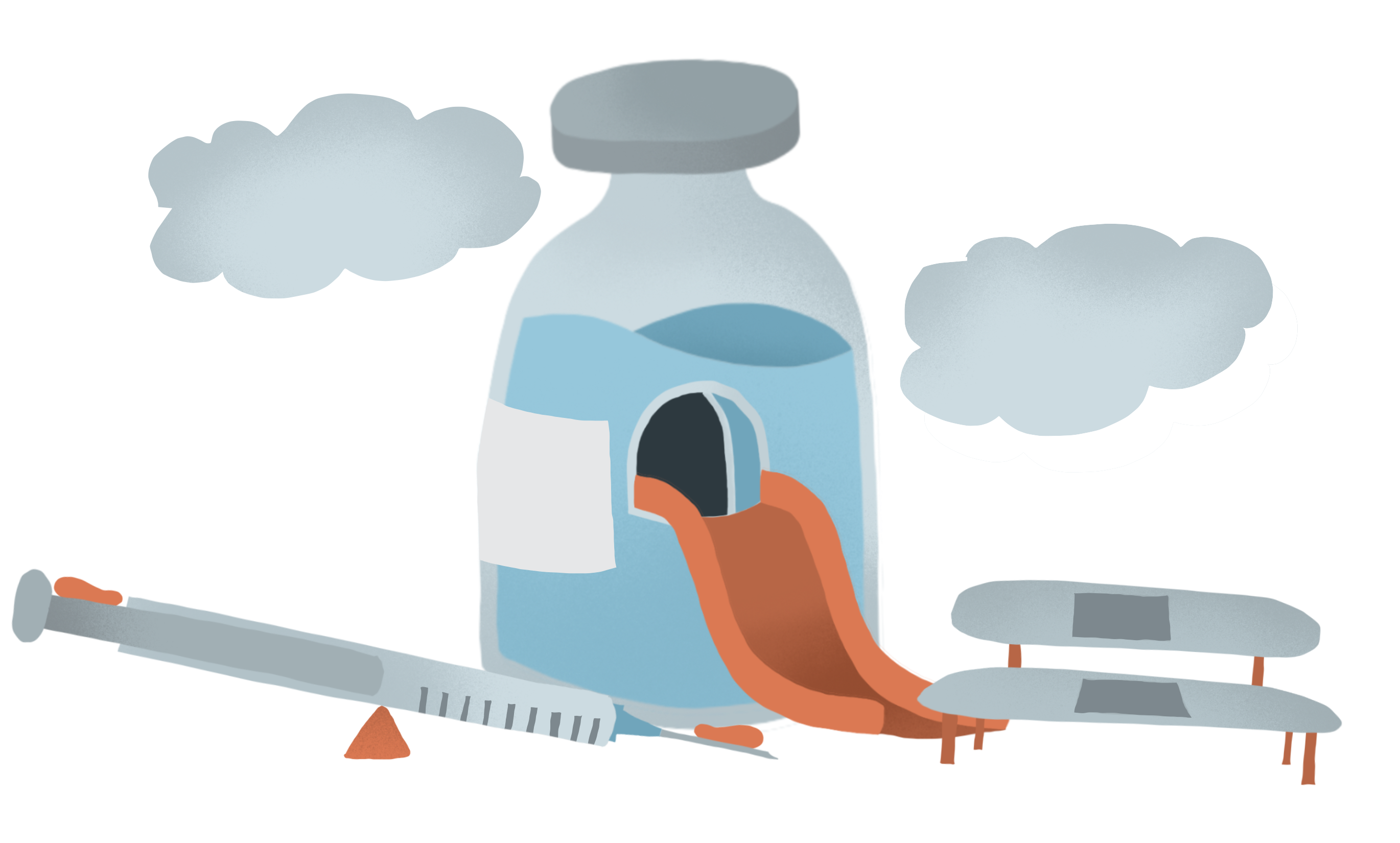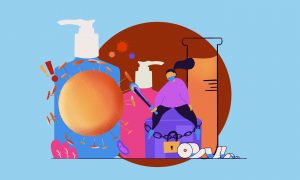At 3:25 p.m. on a Wednesday, a line of families trails out of the Kennedy Recreation Center in Shaw. Parents stand patiently, but their kids are doing any one of a hundred things: shoving siblings, tapping away at iPads, and running around a nearby playground. Each wears an expression of excitement and nervousness—both natural feelings, parents say reassuringly, when you’re waiting to get vaccinated.
On Nov. 10, the Rec Center hosted one of D.C. Health’s 36 pop-up youth vaccination clinics held across the city over the past two weeks. For these families and hundreds more, the clinics offer convenience and flexibility as they rush to vaccinate their newly eligible children against COVID-19.
At the end of October, the FDA approved the Pfizer COVID-19 vaccine for children ages five to 11, and on Nov. 2, the CDC released its long-awaited recommendation that children of those ages receive the vaccine. Almost immediately, pharmacies across the District began offering vaccine appointments to kids, and by Nov. 5, the first pop-up clinics opened. Unlike pharmacies, the clinics do not require a reservation, which can make all the difference for parents like Kendal Tyre. While he waited with his daughter in the opening line at the Rec Center, he noted the abundance of walk-in options made finding a shot easier.
“It was the first priority. First available time, first available place,” Tyre said.
In his place in line, Tyre balanced his laptop precariously on the waist-high fence, typing up a work email. “I’m here trying to work in line, and it’s not working out too well,” he said, laughing. “But getting her the vaccine is really important,” added Tyre, “and it’s good to get it over with.”
The pop-up clinics stay open into the evening, as long as doses are available and parents and children are still coming to take them.
At KIPP D.C. Heights Academy in Anacostia, the site of another pop-up clinic, the afternoon started with a line similar to the Rec Center’s—the clinics are timed intentionally to begin at 3:30, so many families simply waited for half an hour after school ended. But by 5, that line had settled to a slow stream. Families entered the building, exited, and headed straight for the nearby ice cream truck down the street.
KIPP D.C.’s Director of Communications Adam Rupe handed out medical information forms and chatted occasionally with talkative kids.
As one of many adults who had to drive a long way on a weekday to get their shots, Rupe was eager to make sure that wouldn’t be necessary for young children and their parents. Spreading the clinics across all eight wards, according to him, has been crucial for their efficacy.
“It’s really important that they can do it in their community,” Rupe said. “It’s great that D.C. Health is making vaccines available in schools and places that families already trust.”
While the line at the Rec Center was still long, volunteer Katherine Kortum stood outside and ushered families inside one by one. An avid volunteer for D.C. Health throughout the pandemic, she has shifted her hours for her main job, which has gone remote, to be able to work both.
“The two have been an excellent complement for me mentally,” Kortum said. “With the COVID work, I can very clearly say at the end of the day, because of me, 250 kids got vaccinated today.”
“Being able to feel like I have a very tangible benefit in the world has been extremely rewarding,” she added.
The Rec Center clinic was her third volunteer spot in three days. She plans to continue helping out as long as needed because of how much she’s enjoyed interacting with the kids.
“As everybody’s waiting in line, you can talk to the kids and ask them about the patterns on their mask, or ask them the name of the stuffed animal they’ve got, ask them all kinds of things,” Kortum said. “All of them are just so stinkin’ charming, you almost can’t stand it.”
Kortum has noticed that eagerness to get the shot can be a combination of any number of reasons. This was the case for parent Jack Hayes.
“Thanksgiving and Christmas holidays are coming up, and we have family coming to see us,” Hayes said while waiting in line. “At least this way she can have the first shot and some protection.”
His daughter Zeina, who had just returned from greeting her classmate further down the line, interjected with her own explanation.
“A couple of my friends got COVID so it’s a little scary, but this will make me feel a bit safer. I know that I’m negative, but this is good in case something happens,” she said.
Even though their reasons for getting the shot are the same as many adults, vaccine administrators at these youth clinics must make accommodations for the age of their patients. Kortum said it takes longer because the kids might balk at first, and Rupe explained the kids need to stay preoccupied during the post-shot wait period.
“Fifteen minutes is a really long time for a six-year-old to sit, so Cloudy With a Chance of Meatballs is on in the auditorium where they’re set up doing the shots,” he said.
These pop-up clinics have put shots into the arms of over 3,000 kids across the city over the last two weeks—almost every arm that wanted one. Besides being convenient, the first-come, first-served, no appointment basis of the clinics has made them more accessible for all kids, regardless of factors like wealth, race, and immigration status.
“There’s no insurance needed, there’s no IDs needed,” Kortum said. “You just walk in here, vaccinate your kid with some hopefully friendly people, and you get to leave hopefully from a site that was convenient for you.”




